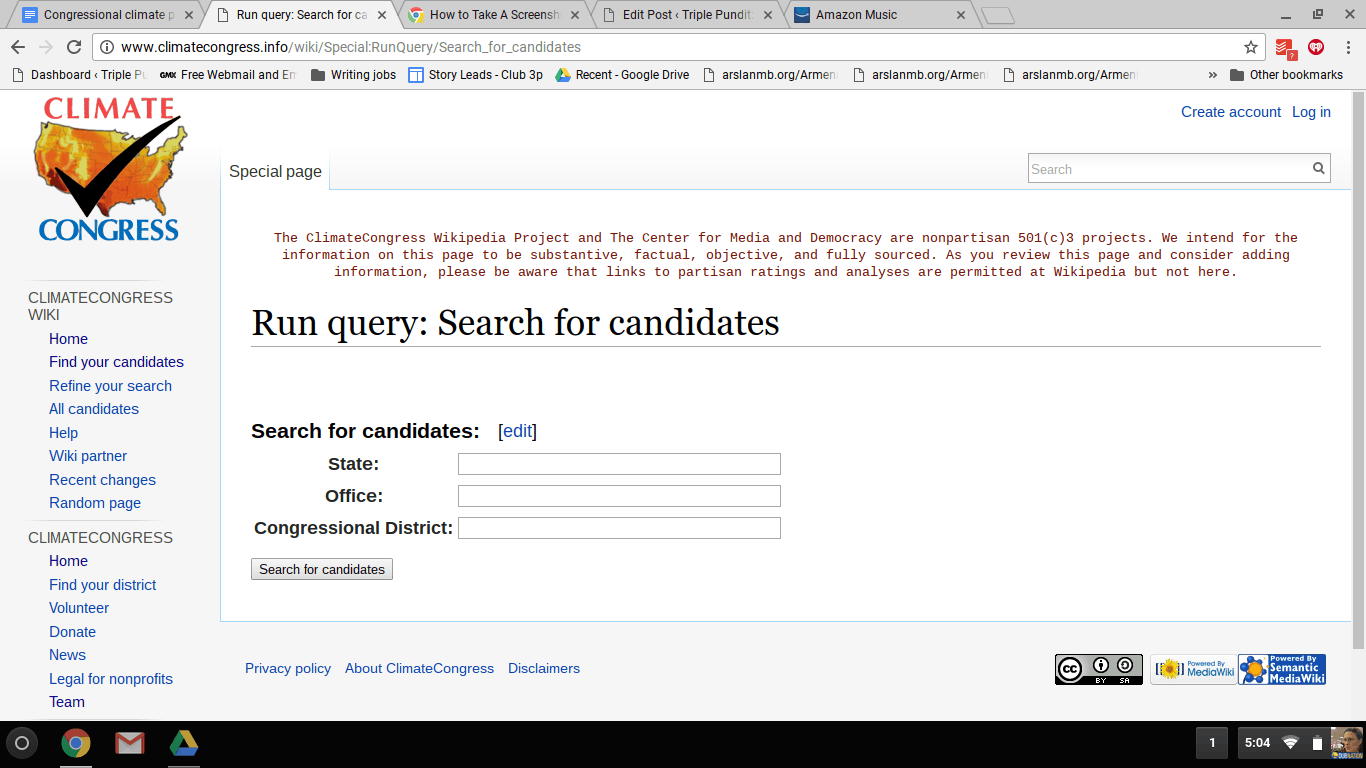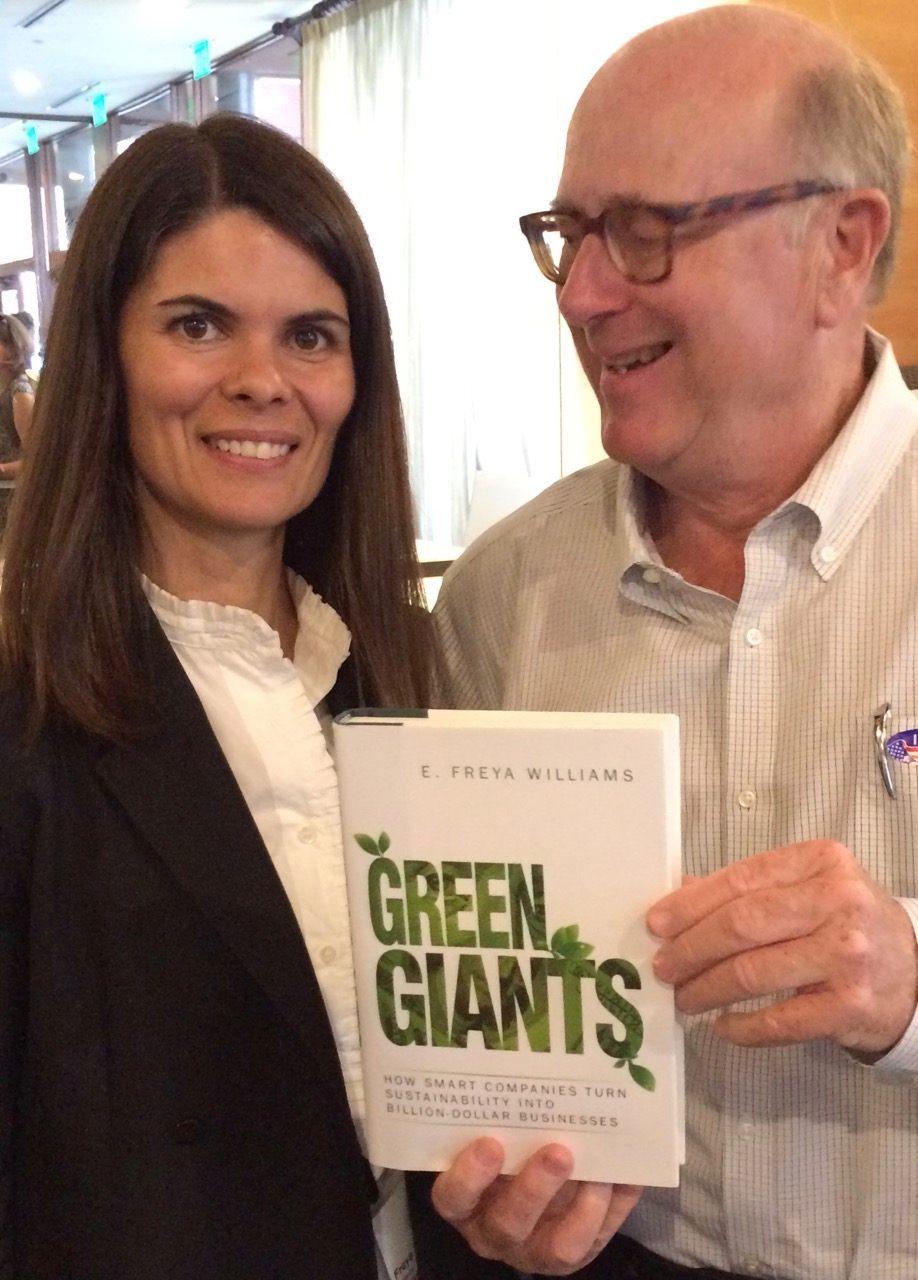Sharing values and engagement opportunities


Ceres: More Insurance Companies Prepared for Climate Change, Yet Improvement Still Needed


With at least $1.8 trillion in written U.S. premiums as of 2014, the insurance industry is critical to many Americans’ financial security.
And no matter where you stand on how much risk climate change poses to citizens’ property, health and security, the evidence suggests it's probable that weather-related events will continue to cause harm to homes, businesses and even human health in the coming years.
The truth is that when their employees underwrite policies, it behooves insurance companies to consider all risks – the basis of which is largely past history. Yet the recent increase in weather-related events appears to go unnoticed by insurers in long-term decision-making.
On that point, this month Ceres, an advocacy group that campaigns for more sustainability leadership throughout the business community, issued a report on how insurance companies are responding to climate change risks.
The Boston-based NGO concluded that while there is some improvement within the sector, many insurers underwriting policies in the U.S. are still “turning a blind eye” to the evidence that climate-related events could have a negative impact on their portfolios.
In fact, out of the almost 150 large insurers Ceres surveyed, the NGO’s analysts gave only 22 companies high marks for considering climate change as an issue that presents threats as well as opportunities.
In terms of how the insurance industry is responding to climate change, Ceres acknowledges improvement from previous years. Back in 2014, when the organization completed a similar study, only nine insurers -- or 3 percent of those surveyed -- said they incorporated climate change risks into their long-term strategic planning. Nevertheless, insurance firms have a long road ahead if they are truly going to protect their assets – or even find ways to create new products or pricing structures that address potential threats to their businesses.
Ceres’ conclusions are aligned with similar studies of the global financial sector taken over the past year. Zillow, the online property database company, suggested that as much as $1 trillion in U.S. property losses may occur over the course of this century. And a survey earlier this spring posited that millions of pensions worldwide could be at risk due to holdings in carbon-intensive industries becoming stranded assets.
Most of the insurance companies to which Ceres offered high scores are property and casualty insurers. That should not be too much of a surprise, considering the damage left by hurricanes such as Matthew and Sandy. The NGO called out Germany-based Allianz, for example, for launching several board committees that routinely address climate change issues. One group within Allianz monitors investments, another examines underwriting policies, and another assesses sustainability risks as well as how environmental factors are embedded within the company’s activities.
Companies that provide life insurance and annuities policies, including Aegon and MetLife, scored high marks for improved disclosures on climate change risks over the past two years. MetLife won praise for having a frank discussion about how climate change could potentially affect its business, and also backed those words with action -- as in, considerable investment in clean energy technologies. Aegon was highlighted for its commitment to the consideration of environmental and climate change issues when screening potential investments.
Depending on how one interprets Ceres’ data on health insurance companies, however, these firms remain largely silent or oblivious to the potential climate impacts on their business models.
Kaiser Permanente was the only health insurer that scored high marks for its aggressive stakeholder engagement efforts to support research linking the effects of climate change on public health.
One would assume the links between an aging population and a warming planet would nudge health insurers to take a hard look at their investment programs, but Ceres alleges that most companies in the space are either silent on climate issues or have completely overlooked these risks.
So, what are Ceres’ recommendations for the insurance industry in order to secure its long term viability?
First, climate risk leadership must be integrated across a company’s entire C-suite and board -- as in, an executive committee that focuses on assessing potential threats. Such leadership in turn would lead to tougher scrutiny of carbon-intensive assets, as well as how they can impact a firm’s overall portfolio. Such risks must also be integrated across insurance firms’ entire enterprise risk assessment frameworks, the NGO advised.
Image credit: Jnn13/Wiki Commons
Report: Agricultural Reform Could Save 122 Million from Extreme Poverty


Without drastic changes to our global food system, as many as 122 million more people could slip into extreme poverty by 2030. That's the upshot of a report released last week by the United Nations' Food and Agriculture Organization.
The report, released just ahead of this week's meeting of the 43rd Committee on World Food Security, highlights the close relationship between climate change, poverty and food security.
"Keeping climate change within manageable levels can only be achieved with the contribution of the agriculture sectors," FAO Director General José Graziano da Silva wrote in the report's foreword. Roughly a fifth of all greenhouse gas emissions come from the agricultural sector.
"The challenge," da Silva said, "is to reduce those emissions while meeting unprecedented demand for food."
Indeed, demand for food is expected to increase by as much as 60 percent by 2050, in response to population growth and rising incomes.
“Food supply shortfalls would lead to major increases in food prices," the report states, "while increased climate variability would accentuate price volatility.”
Many of the people most at risk are the very ones producing our food — mostly smallholder farmers in South Asia and sub-Saharan Africa. Simply producing more food is not an option, however, as more intensive agriculture could exacerbate the problem by increasing emissions. What is needed is a total transformation of our agricultural system, from pre-production all the way down to the individual consumer.
Da Silva framed the need for such transformation as a "moral imperative,” noting that those who would be worst affected by rising temperatures have contributed least to the problem.
While the threats laid out in the FAO report are real, our situation isn’t hopeless. Many of the tools needed to avert the looming ag-ocalypse already exist.
“Wide-spread adoption of practices such as the use of nitrogen-efficient and heat-tolerant crop varieties, zero-tillage and integrated soil fertility management would boost productivity and farmers’ incomes, and help lower food prices,” the report's authors wrote.
Even small changes could have a big impact. Just by adopting more nitrogen-efficient crop varieties, developing countries could reduce the number of food insecure by more than 120 million by 2050.
Still, economic, political and social barriers stand in the way of widespread adoption of more sustainable practices.
“Often,” the authors wrote, “adoption is hampered by policies, such as input subsidies, that perpetuate unsustainable production practices rather than those that promote resource-use efficiency, soil conservation and the reduction in the intensity of agriculture’s own greenhouse gas emissions.”
The report warns a simple “technological fix” won’t solve the problem. Instead, the FAO calls for "a reorientation of agricultural and rural development policies that resets incentives and lowers the barriers to the transformation of food and agricultural systems,” particularly for the world’s nearly half-billion smallholder farmers.
Not everyone was happy with the FAO’s report. Slow Food International, a grassroots organization working to reform our global food system, criticized the FAO for giving too little attention to the role of the meat industry, land grabbing and genetically modified organisms in the present crisis.
In a statement issued this week, Slow Food referenced a 2013 report from the FAO that estimated 14.5 percent of all greenhouse gas emissions could be traced to the livestock industry.
“Eating less meat and more pulses is a necessity for our future,” the Slow Food statement read, “and public support for industrialized meat production must be stopped.”
Slow Food also called attention to the subject of land grabs, mentioned only once in the FAO report.
“Independent observatory the Land Matrix has recorded the sale of two percent of the world’s arable land to private investors since the year 2000,” Slow Food’s statement read. “(That’s) an area larger than the United Kingdom. Where once-pastoral lands are converted for intensive monocultural crop production, this also contributes to climate change.”
Finally, Slow Food took issue with the FAO’s stance on GMOs, calling the report’s silence on the issue “deafening.”
“Beyond questions of safety, the threat to food security comes from the simple fact that GMOs are patented,” the statement read, “and there increasing use is inextricably linked to corporate control of the food chain. Patenting genetic material has shifted the balance of economic power from farmers towards big business in their aggressive pursuit of profit, as small-scale farmers are forced to become customers of GM seeds every new season.
"If FAO is serious in its commitment to supporting smallholder farmers … then surely we must reduce the dependence of these smallholder farmers on patented GM seeds.”
Image credit: Pixabay
Graphic credits: U.N. FAO
Social Media Firms Hand Reams of Data on Law-Abiding Citizens to Law Enforcement


This week, the American Civil Liberties Union (ACLU) slammed America's top three social networks – Facebook, Instagram and Twitter – for willingly providing law enforcement officials with special access to user data, a blatant violation of users' privacy. This news is the latest in a long trend of top social networks shifting away from being open communications platforms and turning into something sinister.
The three networks opened access to huge amounts of user data for Geofeedia, a social media product used widely by law enforcement to monitor activists and protests. This included, but was not limited to: what people posted, where they posted from, and their friends lists.
“This is more than just a violation of our privacy and freedom of speech; this is compliance with a system that tacitly condones institutional racism and surveillance of communities of color — we won’t stand for that,” said Nicole Carty, senior campaigner at SumOfUs, in a press statement.
This is merely the latest in what’s becoming more and more clear: The big social networks and Internet companies are catering not to users like us, but to governments and advertisers. Facebook has acceded to police demands to cut off feeds, and takes down videos with little explanation. Yahoo was caught giving governments access to activists' emails. We live in a world of information, and, today, little of that information is under our control.
Facebook – the world’s largest social network by a wide, wide gap – might be the scariest of them all. Its CEO, Mark Zuckerberg, is now pulling out all the stops to try to gain access to the world’s largest Internet market: China, the same country Google left in 2010. As the Technology Review reported on Tuesday, it might be working.
"Facebook’s founder ... has signaled to Beijing that he’s willing to do what it takes to get into the country. People who know the company well think it will happen. It’s not an if, it’s a when,” Tim Sparapani principal at SPQR Strategies, a consulting firm, told the Technology Review.
Do whatever it takes in China means giving far too much to a repressive regime – one that censors content on local social media networks Weibo and WeChat regularly, and even arrests netizens for sharing something as simple as the photo of the Dalai Lama. Would Facebook allow China to access user data outside of the country? Considering Zuckerberg’s drive for Web domination, nothing is outside of the realm of possibility.
At least the ACLU report resulted in real change. Instagram cut of Geofeedia’s access, and Twitter plans to reign in what it shares as well. It shows the networks will listen when users make demands. Unfortunately, we have no idea how many other companies, governments or hackers are using data from social networks to spy on us.
Us users are partly to blame as well. We actually give these companies wide-ranging access to our data in the terms of service, and so-called "privacy policies" that few of us read. Despite the growing evidence that these companies are using our data to profit off of us, we still keep logging into Facebook and Tweeting daily. Is it such a surprise that they sell our data to nefarious companies like Geofeedia?
Looking back, it’s quite sad. Remember when social media was supposed to be a harbinger of democracy and freedom of expression around the world? When Twitter and Facebook were channels of communication during the Arab Spring (albeit overblown)? Unfortunately, the digital world we live in now becomes more and more closed, as the power of these for-profit, advertising-driven networks grows. We need a new social media platform, one that puts people, communication and privacy before profit. Otherwise, the dream of what the Web could accomplish for the world could be lost forever.
Image credit: C Osett via Flickr
New Wind Energy Study Aims to Break Transmission Barriers


As the cost of wind energy continues to fall, the U.S. wind industry is poised to continue its spectacular growth rate. There is just one problem, and it's a big one: New wind farms can require new transmission lines, and lately some of those new transmission lines have become bogged down in the approval process.
The wind industry already makes a good business case for its product, as evidenced by the number of companies eager to buy into new wind farms. Now the challenge is to get local property owners, other local stakeholders and the voting public firmly in its corner to approve new transmission routes.
In other words: The wind industry is taking its case to consumers.
The new wind energy report
The American Wind Energy Association and the A Renewable America campaign of the Wind Energy Foundation produced a new wind energy report, titled The Consumer Benefits of Wind Energy in Iowa.
It appears the industry is looking to Iowa as a test case for building public support for new transmission lines nationwide. That's a smart move, since growing the wind market depends on building new interstate transmission lines as well as intrastate lines.
Iowa already has a thriving wind industry thanks in large measure to the interest of legendary investor Warren Buffett. The new report looks at the potential impact on consumers in the state, if Iowa doubles its amount of planned and operational wind power.
According to the report, planned and operational wind in Iowa now adds up to about 10,000 megawatts. Doubling that to 20,000 could potentially lead to this result:
"Adding 10,000 MW of wind beyond the amount that is currently operating and planned would save Iowa consumers about $12.6 billion on net over the next 25 years, with average annual savings in excess of $500 million," the report's authors concluded.
That's the nut of the argument for consumers. As the wind industry argues, you're not just replacing one form of energy with another. You're actually getting more bang for your buck.
Here's how the report breaks it down for individual householders over that 25-year period:
"The average household would on net save $3,200 on their electric bills, while the average industrial customer would save $825,000 over that period if their electricity needs were met with wind energy."
A key factor the report takes into consideration is the falling cost of wind power, and the rising cost of coal power. It also includes a detailed look at 3,500 power plants in the region to compare cost fluctuations in other fuel prices with "zero-fuel cost" wind energy.
A rocky road for new wind transmission lines
Iowa has almost ideal conditions for wind farms, and the new report makes a good case for building more of them. However, getting that power off the farm and over to people's homes and businesses is another can of worms.
New transmission lines are like any other major infrastructure project. They alter the landscape, and those effects can ripple into neighboring properties. For that reason alone, some degree of local opposition is almost inevitable.
The U.S. wind industry is also coming of age in a regulatory landscape unlike anything faced by the early years of the coal power generating industry. Environmental concerns, including wildlife conservation, add another hurdle to transmission route planning.
In addition, the wind industry faces vigorous, non-local opposition from its competition in the fossil sector.
Much of that opposition is funded by the Koch brothers, whose family business is heavily invested in fuel pipelines and other fossil industries.
For example, Koch support for key state policymakers was credited with artificially tamping down the Wisconsin wind industry for years. The relationship between the Koch brothers and one such policymaker -- Wisconsin Gov. Scott Walker -- apparently fell apart last fall. Coincidentally or not, the wind logjam broke just a few months after the split became public, and new Wisconsin wind farms are suddenly in the works.
The Koch brothers may have lost Gov. Walker, but direct support for public officials is only part of the anti-wind pushback. The brothers, and other key fossil fuel stakeholders, are also linked to a network of high-profile lobbying groups that regularly transmit anti-wind messaging to the public.
On Oct. 7, for example, a Koch-linked think tank called the Heartland Institute (the long-discredited but prominent group known for lobbying against tobacco regulation and climate science) published a long piece excoriating Democratic presidential candidate Hillary Clinton's energy proposals.
Heartland had this to say about wind energy and new transmission lines:
"... Generating all U.S. electricity with wind would require more than 710,000 monstrous 400-foot-tall 1.5- to 2.0-MW turbines across 93 million acres – an area the size of Montana – costing over $3 trillion! (The same issues imperil solar power.)"It would also require thousands of miles of new transmission lines – crossing state and private lands via eminent domain and a 'streamlined' federal permitting process ..."
On the other hand...
Regardless of the opposition, as a general matter of policymaking, energy decisions are typically made at the state and federal level, not at the local level. That's one reason why local communities have mixed results when attempting to restrict or ban fracking within their limits.
Similar forces are at work in the wind industry. The pushback from fossil interests delayed matters. But if recent developments are any indication, it looks like at least some of those new wind transmission lines are on the way.
That's just the start of a massive amount of transmission construction in the years to come. So far, the wind industry has only developed wind farms on land. And it's on the cusp of developing offshore wind farms along the Atlantic coast. When those turbines come online, the demand for new transmission resources will soar.
Any groundwork the wind industry can do now to build up more goodwill among the voting public will certainly come in handy.
Image (screenshot): via "The Consumer Benefits of Wind Energy in Iowa" via the Wind Energy Foundation.
New Project Gives Info On Congressional Climate Change Positions


Wouldn’t it be great we could look up the climate change positions of each person running for a congressional office on the Internet? It turns out it does exist, and it’s called the ClimateCongress Wikipedia Project (CCWP).
The CCWP is described as a non-partisan 501(c)(3) climate education project that focuses on providing research and summaries to Wikipedia on the climate positions of each U.S Congressional incumbent and their challenger. It is essentially a place where voters concerned about climate change can find out how those running for congressional office stand on the issue. It is the first election resource about how congressional candidates stand on climate change.
“It’s time for more clarity going into the election. We all should know where our legislators stand on climate change," Mike Mielke, co-founder of the ClimateCongress Wikipedia Project (CCWP), said in a statement.“A coordinated surge of interest at the last minute from allied climate and environmental organizations could make the climate issue a factor in some 2016 races," said fellow co-founder Felix Kramer.
The CCWP team researches candidates by asking the following questions:
- What are the individual's views on whether climate change is real and caused by human activity?
- What votes, actions, and governmental/organizational activities on climate change and clean energy has the individual led/supported/opposed?
- What has the individual said about local and regional climate-related impacts and activities?
A look at the information for the two Senate contenders in Georgia shows the value of the information the CCWP teams provides. Sen. Johnny Isakson is the Republican incumbent. When it comes to climate change, he is an obstructionist. He voted to limit the U.S. Environmental Protection Agency's ability to regulate greenhouse gas emissions in 2011. Two years later, he voted for a concurrent resolution creating a point of order that made it harder for Congress to put a price on carbon. In 2015, he voted against several amendments that stated climate change is real and caused by human activity. That same year, he voted against the Obama administration’s Clean Power Plan.
Jim F. Barksdale is the Democratic challenger to Isakson. He states on his campaign’s issues page: “Climate change is a reality and if left unchecked, rising ocean tides will harm Georgia’s Atlantic coast and threaten our state’s robust tourism and shipping industries.” So, Barksdale would likely not be one to vote against measures that seek to lower GHG emissions.
This distinction clearly makes a difference. Less than two weeks ago, Hurricane Matthew caused flooding in the Southeast, including Georgia. The hurricane caused record high tide level and a storm surge just under eight feet at Ft. Pulaski, Georgia. Matthew also impacted South Carolina, causing waist-deep storm surge in parts of Charleston.
The Southeast can expect to experience more tropical storms and flooding. Over the next century, anthropogenic warming will likely lead to an increase in intense tropical cyclones and a projected increase of about 10 to 15 percent for rainfall rates within about 100 kilometers of the storm center, according to the Geophysical Fluid Dynamics Laboratory (GFDL).
While the media is focused on this year’s presidential race, much is at stake when it comes to the congressional races. Who we elect to Congress will have the power to enact laws. We need to ensure that we elect congressional members who believe in climate change and want to do something about it. There’s no time to waste.
Image (screenshot) courtesy of the ClimateCongress Wikipedia Project
'Green Giants' Prove That Sustainability Sells


Our 21st-century economy is being reshaped by consumers searching for "in me, on me and around me" products -- solutions that make daily life more sustainable.
Fast food restaurants like McDonald's are confronting stagnant revenues as consumers search for foods that deliver on taste, price and health. A recent Gallup poll found that 73 percent of Americans want a strong emphasis on renewable energy. In fact, solar now represents over 50 percent of new power generating capacity in the U.S. As the millennial generation comes of age, they are placing an increased emphasis on corporate social responsibility in deciding what to buy and who to work for.
The cumulative impact of these mega trends is a multitrillion-dollar global Green Economic Revolution driving the emergence of a new generation of green companies. These companies are using innovations in clean tech, organic agriculture, artificial intelligence and the Internet of Things to deliver products that align value with values. Think autonomous cars, net zero energy buildings, and farm-to-fork restaurants as examples of how sustainability innovation is reshaping our economy, the environment and individual businesses.
The question is: How does your business harvest this growth opportunity?
Freya Williams, CEO of Futerra North America, addresses this question in her new book, "Green Giants." Her book profiles nine companies with green products that achieve $1 billion or more in annual sales. The result is a compelling set of business cases that prove sustainability sells.
Green giants prove sustainability sells
Winning customers and growing sales is the bottom-line business case for sustainability. Numerous companies are already taking advantage of this strategy.
Target: Target’s Made to Matter line encompasses approximately 100 products in food, baby, beauty and household categories. These products are defined by their reduced waste and packaging, lack of additives or harsh chemicals, and reduced sugar and other dietary criteria. In 2015 the Made to Matter product line achieved $1 billion in annual sales with 30 percent sales growth.
Toyota and Tesla: Toyota is on track to globally sell 1.4 million hybrid cars in 2016. This represents 17 percent annual sales growth. Tesla Motors announced the 2017 launch of an all-electric car selling for $35,000 before tax incentives with a 200-mile range on a full charge. And the company has received $10 billion in pre-orders.
Costco: Costco is now America’s largest organic grocer. Its Kirkland Organics brand achieved $4 billion in 2015 sales.
Walmart: Walmart deployed a Sustainability Index to qualify vendors and products. A company that scores No. 1 on this index within its product category, or a minimum 80/100 score, qualifies as a Sustainability Leader. The sales of Sustainability Leader products exceeded $1.5 billion in 2015.
Williams notes that these companies are not green unicorns. Mirroring 'green giant' best practices is a new generation of companies like Patagonia, Method and Warby Parker that are rapidly growing toward $1 billion in annual green revenues.
Green giant sales success is also having a “pivoting” impact on competing companies. To remain relevant, a number of these green giants' competitors are adopting green business best practices as well. As Williams summarizes, the business case for sustainability is that green sells. And the proof is in the growing number of companies succeeding at winning customers and growing revenues with green products.
How to sell a billion dollars in green products?
Based on the evidence, the obvious question is how to align your company with the Green Economic Revolution. A related question is: Can the best practices used by green giants to grow revenues be applied to your business? That will be the focus of the second part of this three-part article series.
The third part of this article series will profile one of my favorite companies and CEOs. Clif Bar, and its CEO Kevin Cleary, are best-in-class leaders in using sustainability best practices to grow business results. The third article in the series will profile the company's latest innovations, which are achieving 17 percent annual growth.
Image courtesy of the author
New DOJ Database to Track Police Shooting Deaths, Address Implicit Bias


The U.S. Department of Justice is committing $750,000 to establish a national database of police-related shootings.
It will be the first of its kind and, said Federal Bureau of Investigation Director James B. Comey, aims to resolve an "embarrassing" predicament: The federal government often lacks up-to-date information on police-involved shootings.
In many of those instances, Comey noted, the government is forced to turn to media sources and the public to get an accurate picture of just how many police shootings occurred in a given period of time.
Comey admitted that the lack of a federal record-keeping system makes "informed discussion" about the numbers and circumstances surrounding police shootings of black suspects difficult. "[We] don't have the data," he acknowledged.
"People have data about who went to a movie last weekend, or how many books were sold, or how many cases of the flu walked into the emergency room,” he said. “And I cannot tell you how many people were shot by police in the United States last month, last year or anything about the demographic. And that’s a very bad place to be."
The database is due to go live next year and will rely on information supplied by state, local and federal agencies, including the Drug Enforcement Administration; the Federal Bureau of Alcohol, Tobacco, Firearms and Explosives; the Marshals Service; and the FBI. Federal in-custody deaths, including suicides and natural deaths, will be included as well. Reporting non-lethal encounters won't be mandatory, the DOJ says. But the department says it hopes local police authorities will voluntarily report that information.
The DOJ's plan faced criticism from civil rights advocates, including the American Civil Liberties Union, which said that even though a federal law was passed in 2014 requiring agencies to report in-custody deaths to the federal government, the DOJ has yet to disclose how it would impose penalties to agencies that violate the law. Under the Deaths in Custody Reporting Act (DICRA), the Attorney General has the power to impose financial penalties against agencies that don't report. It has yet to come up with a plan to do so.
"The financial penalty is critical to successful implementation of DICRA as voluntary reporting programs on police-community encounters have failed," a group of civil rights groups, including the ACLU, wrote in a letter to the DOJ earlier this month. "Reportedly, only 224 of the more than 18,000 law enforcement agencies reported approximately 444 fatal police shootings to the Federal Bureau of Investigation (FBI) in 2014, though we have reason to believe that annual numbers of people killed by police exceed 1,000."
The federal government isn't the only one missing data, however. According to a study conducted by researchers at the University of Texas, both California and Texas have laws that require law enforcement agencies to report officer-involved shooting deaths. But as many as 660 use-of-force deaths went unreported in Texas and California (220 in Texas and 440 in California), according to the study. In Texas, the deaths include two mentally ill individuals shot in 2007.
The researchers note the agencies that had the most unreported use-of-force deaths weren't small, rural agencies, but large metropolitan police forces. Houston, Los Angeles and Fresno police departments were found to be the most deficient in reporting officer-involved deaths.
The new federal reporting requirement is the result of recommendations made by a commission convened by President Barack Obama in 2014. The commission was tasked with finding ways to improve communication and reduce tensions between communities and the law enforcement agencies in their area.
Image credit: Pixabay
Samsung’s Failed Note 7 Phones Pose a Big Environmental Problem


By now nearly everyone knows the story of Samsung’s flagship smartphone, the Galaxy Note 7. The phone's batteries are known to overheat, and they have even caught fire in some instances -- causing Samsung to issue a recall of all Note 7 phones.
One less discussed aspect of this story is the environmental threat posed by the massive recall. Samsung stated that it will dispose of the phones, but it's unclear how its disposal methods will impact the environment. “We have a process in place to safely dispose of the phones in accordance with all government regulations,” Samsung told TechRadar. But the phones “will not be repaired, refurbished, or resold ever again,” the company also told Motherboard.
Discarding millions of smartphones is a total waste. As Motherboard put it last week, the failure of the Note 7 “is an environmental tragedy, regardless of what Samsung decides will happen to the 2.5 million devices it manufactured.”
Smartphones are small devices, but they pack much in them. It takes about 165 pounds of raw materials to manufacture one cellphone and over 8 million gallons of water to produce one microchip, according to a 2013 report by the Institute of Electrical and Electronics Engineers. So, Samsung’s failed Note 7 phones already generated a tremendous amount of waste that will not be recycled or recovered.
There is a chance that parts of the unused Note 7 phones will be recycled. But even if smartphones are recycled, not all of the materials used to make them can be recovered. Take rare earth minerals. Just one iPhone has eight different rare-earth metals, according to the American Chemical Society (ACS). But other types of smartphones may contain up to 16 of the 17 different rare-earth metals. Rare earth minerals are present in all electronic devices, and 99 percent of them can’t be recovered for recycling, iFixit states on its website.
Some of the rare earth metals used in smartphones include what are termed “conflict minerals.” Conflict minerals come from the Democratic Republic of the Congo (DRC) and finance the country’s conflict, which the Enough Project refers to as the “deadliest conflict globally since World War II.” One of such conflict minerals is cobalt, and over half of the world’s total supply comes from the DRC. The DRC government estimates that 20 percent of the cobalt it exports comes from artisanal miners in the southern part of the country. Those miners work by hand using “the most basic tools,” according to an Amnesty International report released earlier this year. Some of them are children.
The Amnesty International report found that Samsung couldn’t account for the exact origin of the cobalt it uses. Although the company doesn’t directly do business with companies that supply cobalt from the DRC, it doesn’t carry out supply chain diligence for cobalt. Samsung told the human rights organization that, because it is “very hard to trace the source of the mineral,” it is “impossible” for the company to determine if the cobalt in its supply chain is indeed a conflict mineral.
The Note 7 fiasco represents a chance for smartphone makers to learn more about recycling
Phones that are recovered and not sitting in a dresser drawer or in a landfill are usually refurbished. “Whether you donate to a charity, sell your phone online or in a retail store, or drop it off at a recycler, the first order of business for most is to refurbish the phones and sell them back on the thriving secondary market,” Jessica Dolcourt of CNET explained. The reason is that it is cheaper for a phone carrier to give you a refurbished phone if you lose or break your original one.Even if phones are recycled, much content is lost: 20 to 35 percent of the material content is lost when it is “shredded and melted down for recycling,” according to iFixit.
However, there is something good that can came out of the Note 7 fiasco, for it provides smartphone makers with a chance to learn much more about recycling. Considering that a 2015 Pew report found that 64 percent of American adults own a smartphone, it’s something that these firms desperately need to learn.
Image credit: Samsung
3p Weekend: 10 Companies Offering Paid Family Leave to All Employees


With a busy week behind you and the weekend within reach, there’s no shame in taking things a bit easy on Friday afternoon. With this in mind, every Friday TriplePundit will give you an easy read on a topic you care about. So, take a break from those endless email threads and spend five minutes catching up on the latest trends in sustainability and business.
The United States remains the only industrialized nation that does not mandate paid family leave for all workers. Thankfully, some companies are beginning to take matters into their own hands -- not only because it's the right thing to do, but also because it makes good business sense.
"When employees are able to take paid leave, they’re less stressed at work and are able to come back feeling refreshed, both of which are good news for employee efficiency and thus the bottom line," Richard Eidlin, vice president of public policy and business engagement for the American Sustainable Business Council, wrote in an op/ed on TriplePundit.
Despite these benefits, only 13 percent of workers in the private sector have access to paid parental leave, according to the U.S. Department of Labor. And by far, most of them are white-collar, salaried workers.
These 10 companies are bucking this trend by offering all employees paid leave to care for a new child or a sick family member. You may notice one thing they all have in common: They're remarkably successful for their industries. Coincidence? You decide.
1. Netflix
The online streaming service now available in over 190 countries made waves last year with a surprising announcement: It would extend unlimited family leave to all salaried employees. New moms and dads can take off work indefinitely for the first year after a child's birth or adoption, with the option to return to full- or part-time work and then take leave again as needed.
Hourly workers also receive paid time off following the birth or adoption of a child, albeit not as generous as the company's unlimited policy. Hourly employees in the company's streaming department are eligible for 16 weeks paid maternity or paternity leave. Employees in the DVD department are eligible for 12 weeks, while customer service employees receive 14 weeks.
2. Spotify
Not to be outdone by its counterpart in the streaming biz, Spotify announced its own paid family leave upgrade last year. The music streaming company took a page from its Swedish founders' handbook and now offers six months paid family leave to all new parents -- mothers and fathers, hourly and salaried, adopted or birth.
3. Deloitte
In September, Deloitte launched what it calls the most extensive new family leave policy in the professional services industry. The new policy will allow all male and female employees to take up to 16 weeks of paid time off to care for a family member, such as a new child, a spouse or an aging parent.
Under the new policy, birth mothers are now eligible for up to six months of paid time off when factoring in short-term disability, Fortune reported.
4. Hilton
The latest on the family leave bandwagon, Hilton opted to extend its policies last week. Under the new policy, all employees can take up to 10 weeks of fully paid leave following the birth or adoption of a child, NPR reported.
While lower-wage, hourly workers are often left out of paid leave, Hilton went full-boar and extended its policies to all 40,000 team members -- from cooks and housekeepers to corporate executives.
5. Nike
Earlier this year, footwear and apparel giant Nike undertook a much-needed expansion of its paid family leave policy. Its former policy did not extend family benefits to hourly workers, new fathers or adoptive parents. And birth mothers only received six weeks paid time.
Under the new policy, all full-time employees (30 hours or more per week) are eligible for eight weeks paid family leave, Reuters reported in May. This includes new fathers, adoptive parents and employees who need to care for a sick family member. Birth mothers are now eligible for 14 weeks paid time, with the option to extend as medically necessary and recommended by a doctor.
6. Adobe
At the start of next month, Adobe will introduce its new family leave policy to all employees. Under the new policy, all employees are eligible for the following, according to the software giant:
- Medical Leave: Up to 10 weeks of paid time for surgery, childbirth, a medical emergency or illness.
- Parental Leave: 16 weeks of paid time for primary caregivers. This includes moms and dads who become parents through childbirth, surrogacy, adoption or foster care.
- Maternity Leave: Through the combination of Medical and Parental Leave, birth mothers will receive up to 26 weeks of paid time.
- Family Care Leave: Provides employees up to four weeks of paid time to care for a sick family member.
7. ZestFinance
Financial technology company ZestFinance is determined to stay on the cutting edge -- and that includes its benefits package for employees. At the start of this year, the company announced a new set of benefits that extend paid family leave to all workers.
Under the new policy, primary caregivers are eligible for six months of paid leave, with the option to work part-time for six additional months will full benefits. New secondary caregivers can take up to three months of paid time.
The new policy is part of ZestFinance's quest for a truly diverse and inclusive workforce. It's concurrent with the company's goals to increase minority diversity by 25 percent and achieve gender parity in its workforce, a goal it achieved for its C-suite last year.
8. Coca-Cola
Coca-Cola expanded its paid family leave earlier this year -- and said its millennial employees are largely to thank. As of next year, the company will offer six weeks of paid leave to all new parents in the U.S., including moms and dads who come to the role through birth, adoption or foster arrangements.
The policy includes hourly workers but comes with one caveat -- only non-bargaining (i.e., non-union) employees can take part.
9. Amazon
Last year, an Amazon representative sent an email to Bloomberg BNA to announce its new paid family leave policy. Moving forward, Amazon is offering up to 20 paid weeks paid leave for new mothers, consisting of four weeks of paid pre-partum medical leave, followed by 10 weeks of paid maternity leave and six weeks of paid parental leave.
Those six weeks of parental leave are also available to new fathers and “all other new parents who have been at Amazon for a year or more,” the company told Bloomberg.
10. Etsy
After going public last year, many worried that Etsy -- a certified B Corp and self-proclaimed social responsibility leader -- would change its tune to suit Wall Street. But that doesn't seem to be the case, at least when it comes to paid family leave.
Beginning in April, the peer-to-peer e-commerce company began offering all employees 26 weeks of fully paid leave when they become a parent through birth or adoption, regardless of their gender.
“When my wife and I adopted our son nearly four years ago, I took the full five weeks of leave we offered at the time,” Etsy CEO Chad Dickerson said in a statement in March. “It was the most important way I could have spent that time. Building a company is a team effort that includes the immense support we get from our families. I’m excited that our new leave policy will strengthen families and, as a result, the company as a whole.”
Image courtesy of Netflix (press use only)